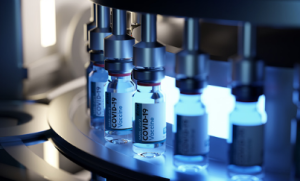Important Factors to Consider When Designing Pharmaceutical Packaging
November 17, 2022
Pharmaceutical packaging is important in the manufacture and distribution of pharmaceutical products. Therefore, its design and construction should take into account several factors. These include the distribution system, manufacturing facilities, and physical and chemical characteristics of the drug entity. Other important considerations include the route by which the product may degrade and the patient group receiving the product. Finally, it should be attractive to patients and meet regulatory requirements.
 Primary packaging
Primary packaging
Primary pharmaceutical packaging refers to the materials and systems used to package medicines. These materials and systems must be inert to prevent contamination during transportation, storage, and dispensing. Primary pharmaceutical packaging materials include thermoformed plastic, glass, and stainless steel. Secondary pharmaceutical packaging uses cardboard boxes that do not directly contact the drug.
The market is segmented by region. The North American region includes the U.S., Canada, and Mexico, while Europe is divided into Germany, France, Switzerland, and Belgium. Europe also includes Russia, Italy, Spain, and Turkey. Asia-Pacific (APAC) and Middle East & Africa are two regions of the world that are expected to have significant primary pharmaceutical packaging markets in the coming years.
Globally, the primary pharmaceutical packaging market is dominated by North America, with a significant share of revenue generated in the region. However, Asia-Pacific is expected to grow fastest during the forecast period, from 2021 to 2028. In addition, this region is expected to benefit from government initiatives in emerging pharmaceutical markets.
Pre-formulation studies
Pre-formulation studies are a multidisciplinary approach to pharmaceutical product development. They examine various properties of the active pharmaceutical ingredient (API) to develop a suitable formulation. The results of these studies help create a stable, effective, and safer drug delivery system. These studies are conducted early in the drug development process.
Pre-formulation stability studies are conducted on candidate drug molecules, dosage forms, and novel formulation excipients. These studies provide essential information on the stability of a drug product and can prevent product degradation. It is also important to determine whether drug-excipient interactions affect the stability of the drug product.
In addition to determining the stability of a pharmaceutical product, pre-formulation studies should also assess the compatibility of the pharmaceutical product with its environment. For example, APIs may need to be tested for solubility in different environments, whether in an environment with high temperatures or in environments where they are subjected to high temperatures. In addition, a study on the product’s compatibility with the drug’s packaging may be beneficial.
Leachability study
A Leachability study is a critical element of the assessment process for pharmaceutical packaging. It identifies leachables and their potential health risks. The assessment process includes quantitative and qualitative analyses, which define the thresholds at which leachables must be monitored and reported for toxicological assessment. A Leachability study should be comprehensive enough to identify unknown contaminants while being conservative enough to account for the sensitivity of the test method. Test reports should also tabulate the levels of leachables at various storage conditions.
The first step of the Leachability Study of Pharmaceutical Packaging involves characterising the leachable source. It is necessary for evaluating the toxicological risk, product impact, and regulatory submission. It can be performed at two different time points, during the preparation of the test solution and after extraction.
The Leachability Study involves multiple experiments that are carried out under precise conditions. Therefore, instrument settings and spiking solutions must be adapted depending on the tested material. In addition, a leachables test must meet strict requirements regarding the concentrations of compounds in the target materials.
Tamper-evident properties
Tamper-evident properties of pharmaceutical packages provide added consumer security. As a result, they are often required for pharmaceuticals and other high-value goods and services. Tamper-evident packaging is available in many forms, including blister packaging, resealable pouches and lidding films.
Tamper-evident pharmaceutical packaging is made with advanced techniques to make its contents unmistakable. These methods include covert as well as overt technologies. They offer a high level of protection against counterfeiting attempts and ensure medication safety throughout their supply chain. Tamper-evident packaging combines the regulatory need for certain medications with a versatile structural design. Tamper-evident packaging from AR Packaging is available with a wide variety of solutions, including easy-peel solutions and flexible packaging with colour-changing lids when opened for the first time.
Other tamper-evident packaging methods include shrink wrap, holographic films, breakable caps and a secondary backing board structure that allows the container to be resealed after opening. These methods are technically feasible but must be viewed critically due to space and maintenance requirements.